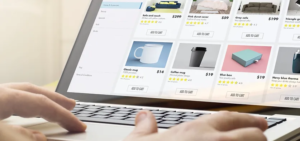
Build vs. Buy: The Dilemma of TMS Acquisition in Logistics Management
In the realm of logistics management, the decision to build your own Transport Management System (TMS) or purchase an existing solution is a critical one. Both options offer unique advantages and disadvantages, each with its own set of considerations. In this blog essay, we’ll delve into the intricacies of building versus buying a TMS, exploring the advantages and disadvantages of each approach to help businesses make an informed decision.
Advantages of “Building” Your Own TMS:
- Customization: Building your own TMS allows for full customization to suit the specific needs and workflows of your business. You have the flexibility to design features, modules, and interfaces tailored to your unique requirements, ensuring a perfect fit for your logistics operations.
- Control: With a custom-built TMS, you have complete control over the development process, from design and implementation to maintenance and updates. This level of control enables you to prioritize features, address issues promptly, and adapt to changing business needs without reliance on external vendors.
- Scalability: Building your own TMS offers scalability, allowing you to scale up or down as your business grows and evolves. You can add new features, integrate with other systems, and expand functionality to accommodate changing requirements, ensuring that your TMS remains aligned with your business goals.
Disdvantages of “Building” Your Own TMS:
- Time and Resources: Building a TMS from scratch requires significant time, resources, and expertise. Development, testing, and deployment can be lengthy and costly processes, delaying time-to-market and diverting resources from other strategic initiatives.
- Complexity: Developing a TMS involves dealing with complex technical challenges, such as integration with third-party systems, data security, and compliance with industry standards. Managing these complexities can be daunting, particularly for businesses without extensive experience in software development.
- Maintenance and Support: After the initial development phase, ongoing maintenance and support of a custom-built TMS can be demanding and resource-intensive. You’ll need dedicated IT staff or external partners to handle updates, bug fixes, and technical support, adding to the total cost of ownership.
Advantages of “Buying” a TMS:
- Rapid Deployment: Purchasing a pre-built TMS enables rapid deployment, allowing you to start using the system almost immediately. With off-the-shelf solutions, you can avoid the time-consuming development phase and quickly realize the benefits of improved logistics management.
- Cost Savings: Buying a TMS can be cost-effective compared to building one from scratch. Upfront costs are typically lower, and ongoing maintenance and support are often included in the subscription fees, reducing total cost of ownership over time.
- Vendor Expertise: TMS vendors bring extensive expertise and industry best practices to the table. By leveraging their experience and knowledge, you can benefit from a mature, feature-rich solution that addresses common logistics challenges and incorporates industry standards and regulations.
Disadvantages of “Buying” a TMS:
- Limited Customization: Off-the-shelf TMS solutions may lack the level of customization required to meet your specific business needs. While vendors may offer some degree of configurability, you may encounter limitations in functionality or workflow flexibility.
- Vendor Dependency: Relying on a TMS vendor for software updates, support, and maintenance means placing a level of dependency on external parties. If the vendor experiences issues or discontinues support for the product, your business could be left vulnerable to disruptions.
- Fit-for-Purpose: There’s a risk that a purchased TMS may not fully align with your business requirements or may include features that you don’t need. Evaluating and selecting the right solution requires careful consideration and thorough testing to ensure it meets your specific needs.
Conclusion:
In the build vs. buy debate, there’s no one-size-fits-all answer. The decision to build your own TMS or buy an existing solution depends on factors such as your business requirements, budget, timeline, and technical expertise. While building a custom TMS offers unparalleled customization and control, it requires significant investment in time and resources. On the other hand, buying a TMS offers rapid deployment, cost savings, and access to vendor expertise, but may come with limitations in customization and dependency on external vendors. Ultimately, businesses must weigh the pros and cons of each approach and choose the option that best aligns with their strategic objectives and long-term goals in logistics management.





